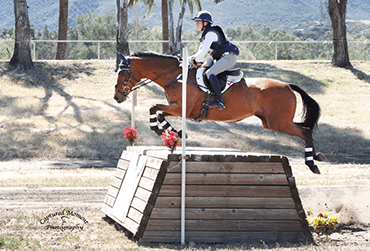San Luis Rey Equine Hospital provides the full range of sophisticated elective surgical services utilizing techniques including arthroscopy, laparoscopy, & orthopedic repair, while maintaining a focus on current treatments for upper airway and soft tissue surgical techniques.
Our 24-hour emergency care team is an essential component to SLREHs surgical service, offering colic surgery, cesarean sections, and any other urgent surgical expertise. Anesthesia is undertaken by experienced veterinarians supported by state-of-the-art monitoring equipment, with padded recovery areas set up to allow rope-assisted recovery from general anesthesia.
SLREH offers the full range of post-operative management for both elective and emergency cases.

- Abdominal surgery
- Wound care & reconstruction
- Skin grafts
- Reproductive surgery (Also see Laparoscopy)
- Thoracic surgery
- Urogenital surgery
- Upper airway surgery (Also see Respiratory Surgery)
Whether your horse requires routine surgery, emergency surgery, or a more specialized procedure such as laparoscopy or laser surgery, our hospital is staffed and equipped to provide the expertise and technology to ensure the best outcome.
Laparoscopy is a rapidly advancing, minimally invasive surgical technique.
At San Luis Rey Equine Hospital, we now offer laparoscopy for ovariectomy and cryptorchidectomy (abdominally retained testicles) in standing sedated horses. With the latest technology in vessel sealing devices currently available in the clinic these laparoscopic surgeries are now safer to perform in a shorter period of time. The clinic also boasts the addition of a laparoscopic morcellator (instrument for tissue division & removal) making SLREH one of the few clinics now capable of performing true “keyhole surgery” as we are able to remove ovaries and retained testicles through a single 10mm laparoscopic portal.
These surgical advancements reduce the requirement for general anesthesia in most cases, allowing a more rapid return to work.
Arthroscopic surgery is a minimally invasive surgical technique used to evaluate and treat a variety of problems and is especially indicated for the removal of bone and cartilage lesions from joints.
The surgery is performed under general anesthesia with a rigid camera (scope) inserted into the joint through small incisions to allow visualization of the affected area and the insertion of specialized instruments through an additional incision.
Minimally invasive surgery, such as arthroscopy, leads to more rapid healing, however, return to training or function is determined by the severity of the lesion(s) observed at the time of surgery.
Tenoscopy is similar to arthroscopy with the same specialized equipment utilized to access lesions within the tendon sheath or bursa (bursoscopy). Surgery is set up and performed as for arthroscopy with soft tissue structures surgically assessed. Although this procedure is minimally invasive, the time for return to training or function is determined by the additional procedures performed and the severity of the lesion(s) observed during surgery.
The upper respiratory tract is a complex and delicate region in the horse that can have performance limiting effects due to a variety of conditions.
At San Luis Rey Equine Hospital, upper respiratory surgery is performed with either minimally invasive laser surgery for minor conditions or general anesthesia and advanced surgery for more complex conditions. Our clinic offers high-speed treadmill endoscopy for real-time assessment of upper airway problems.
The orthopedic service at San Luis Rey Equine Hospital is equipped to treat acquired and congenital conditions (i.e. OCD lesions), growth defects (angular limb deformities), bone chip removal, arthrodesis, and fracture repair.
SLREH are also prepared to treat traumatic injuries such as joint or tendon infections that affect the bone or synovial structures, as well as severe fracture stabilization.
An endoscope is a small flexible fiber optic tube with a video camera that allows direct visualization of internal structures. The endoscope allows examination and evaluation of otherwise inaccessible structures such as the upper respiratory tract (including the pharynx, trachea and guttural pouches), the upper gastrointestinal tract, the ears (otoscopy), the urethra and bladder as well as the cervix and uterus in the mare.
Video endoscopy allows the image to be displayed on a monitor, in addition to providing video imaging capabilities for clients & referring veterinarians.
A laser is an intense beam of light that is focused on an area to cut, seal, or vaporize tissue. At SLREH, our diode laser can be delivered through a small quartz fiber that fits into a videoendoscope for surgery in otherwise inaccessible areas of the body such as the upper respiratory tract.
Alternatively, the laser can be used separately from the videoendoscope for external mass removal or other soft tissue surgery. Laser surgery allows for less bleeding, swelling and pain with increased precision at the time of surgery leading to rapid healing times.
Our team at San Luis Rey Equine Hospital offers advanced services for treating conditions affecting the skull, sinus cavities, lower jaw, and teeth. Detailed imaging, including computed tomography, is available for horses with more advanced oral, dental, sinus or skull pathology.
Diagnostic and corrective solutions are often performed with horses under standing sedation and local nerve blocks, however, certain procedures require general anesthesia.
If you have questions or believe your horse may be a good candidate for Wobbler surgery please call us for a consultation. Further information is available here.







